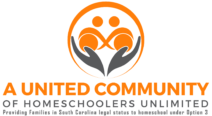Mark your calendars:
Food Safety and Food Preservation
I. Introduction
II. What causes food to “spoil”?
Microbial
Bacteria, Yeast & Mold
Environment/Atmosphere
Oxidation, Rancidity, “off flavors”
Other
III. Methods for preserving food or extending shelf life
Temperature
Sanitation
Moisture level
Ph- acidity level
Packaging/Environmental control
IV. Safe Food preparation
Sanitation
Temperature
Time
If you would like to take this class further into your homeschooling these are some things you could consider or even if your student would like to go on to study food science even further:
- Food safety – the causes, prevention and communication dealing with foodborne illness
- Food microbiology – the positive and negative interactions between micro-organisms and foods
- Food preservation – the causes and prevention of quality degradation
- Food engineering – the industrial processes used to manufacture food
- Product development – the invention of new food products
- Sensory analysis – the study of how food is perceived by the consumer’s senses
- Food chemistry – the molecular composition of food and the involvement of these molecules in chemical reactions
- Food physical chemistry– the study of both physical and chemical interactions in foods in terms of physical and chemical principles applied to food systems, as well as the application of physicochemical techniques and instrumentation for the study and analysis of foods
- Food packaging – the study of how packaging is used to preserve food after it has been processed and contain it through distribution
- Molecular gastronomy – the scientific investigation of processes in cooking, social & artistic gastronomical phenomena
- Food technology – the technological aspects
- Food physics – the physical aspects of foods (such as viscosity, creaminess, and texture)
- Food physical chemistry– physical and chemical aspects of foods, structure-functionality relationships in foods.
Family and Consumer Sciences Core Courses:
· Food and Nutrition
· Lifespan Studies
· Housing and Environment
· Clothing and Textiles
Food and Nutrition cluster courses:
· Food Preparation and Nutrition
· Nutrition, Health and Fitness
· Culture and Foods
· Gourmet Foods
· Entrepreneurship
· Commercial Food Program
· Food Science (may be used for 1 science credit)
